Posted by · Leave a Comment
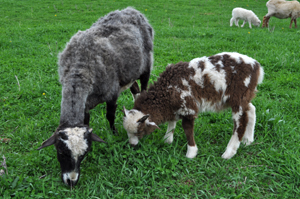 Pasture management is a system by which farmers and ranchers manage their acreage in order to gain the best possible yield for their animals with as little stress on the land as possible.
Pasture management is a system by which farmers and ranchers manage their acreage in order to gain the best possible yield for their animals with as little stress on the land as possible.
Regular “pasture walks” accomplish a great deal and allow the farmer to recognize the rate of consumption of the grasses and plants as well as address any problems that arise.
A conscientious farmer will also pay attention to the amount of manure collecting on the pasture.
Positive management practices will impede erosion and preclude runoff reaching streams and waterways. (This is especially important if you live near an environmentally fragile area like a riparian buffer, for instance.)
Rotational grazing will allow sufficient re-growth and minimize damage from animal “tramping” as well.
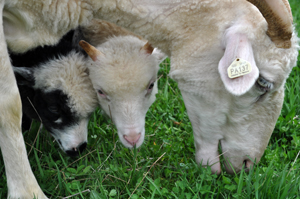 Pasture management is a year-round responsibility.
Pasture management is a year-round responsibility.
Remember to soil-test your pasture. See if there’s anything to “feed” it so that it may, in turn, provide feed for your livestock.
The local cooperative extension in your area is, as always, a great resource!

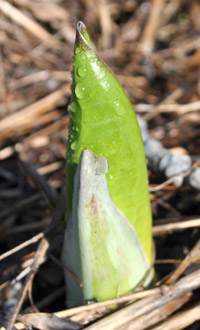 Forget your daffodils and tulips! The real harbinger of spring in these parts? Skunk cabbage.
Forget your daffodils and tulips! The real harbinger of spring in these parts? Skunk cabbage.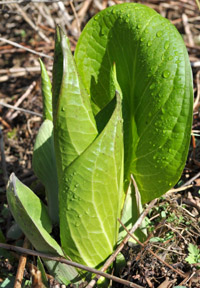 The rhizomes (horizontal underground stems) that anchor this plant can live thousands of years, according to botanists, and no matter where you find eastern skunk cabbage (from Canada all the way to Georgia) the species is the same—meaning it hasn’t adapted to different zones. All it requires are damp/boggy areas which remain wet year-round.
The rhizomes (horizontal underground stems) that anchor this plant can live thousands of years, according to botanists, and no matter where you find eastern skunk cabbage (from Canada all the way to Georgia) the species is the same—meaning it hasn’t adapted to different zones. All it requires are damp/boggy areas which remain wet year-round.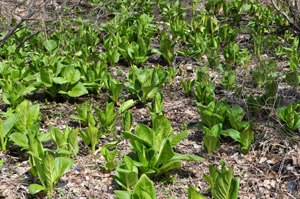 Skunk cabbage has been around for thousands of years—a native wetlands plant. It intrigues everyone from the weekend hiker to the learned botanist. Me? I just like to be reminded spring is right around the corner.
Skunk cabbage has been around for thousands of years—a native wetlands plant. It intrigues everyone from the weekend hiker to the learned botanist. Me? I just like to be reminded spring is right around the corner.
